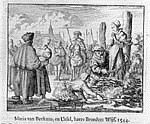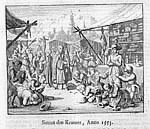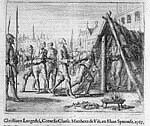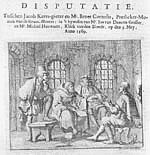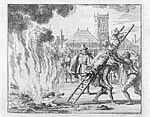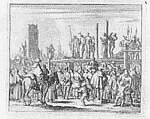The Spanish inquisition flamed up once again during the occupation of the Low Countries (Belgium and the Netherlands) in the 16th century. The Spanish authorities saw religious affiliation as political affiliation, and religious dissent as political dissent. In truth, Protestantism had become linked to Dutch nationalism and to the independence movement against Spain. In 1566, Dutch Protestants stormed into churches to destroy religious pictures and statues, which they saw as idolatrous. A new wave of Spanish religious persecution ensued under the Duke of Alva. But Protestantism in northern Europe, protected by powerful princes, was too strong for a new inquistion to succeed. Later, When the Netherlands became independent, the new Dutch Reformed leaders began clamping down on Catholics, just as the Spanish had clamped down on Protestants. Divisiveness and affluence seems to have withered the strength of the Dutch Anabaptists in a way that persecution had not.
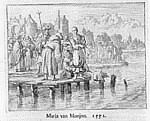
Many Anabaptist women were drowned. Maria von Monjou, 1552
Unlike the Calvinists, Anabaptists believed a Christian should not serve in the government or the military at all. Thought the followers of Menno Simons were not interested in overthrowing the kingdoms of the world, both Catholic and Protestant rulers persecuted them anyway. They remembered that the heretical Muensterites, who took up swords in the name of God in 1534-35, denied the validity of infant baptism just as Menno Simons did. Failure to attend the state church was treason, and being rebaptised was punishable by death.
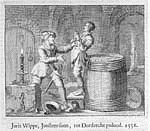
Secret drowning
of former town leader Joris Wippe, Dordrecht, 1558
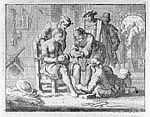
Torture
of Joost Joosten, Veere, Zeeland, 1560
Most torture during this "Dutch Inquisition" was an attempt to convince prisoners to implicate their fellow believers. Some Anabaptists would give names of those who had already died or fled the country. Others refused to name any names at all. As one said,"If the devil comes upon the first step, he also comes higher." Others lost their resolve on the rack and some of these denied their faith. Usually, apostates would be punished less severely - by being beheaded instead of burned alive. Rank-and-file Anabaptist men were often beheaded while women were drowned.
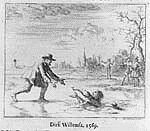
The most enduring image from Martyrs Mirror: Dirk Willems rescuing his pursuer, Asperen, 1569
The anti-Anabaptist inquisition in the Low Countries was mostly run by local religious and political leaders, not by the Spanish themselves. Charles V, Emperor of the Holy Roman Empire, fueled the fire by renewing a centuries-old decree against the Anabaptists. And the Spanish Duke of Alva, who ruled the Low Countries, made sure the decree was enforced. But the Martyrs Mirror testifies that the Anabaptists' worst enemies spoke their own language and lived in their own towns.
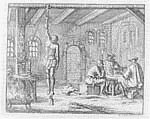
Torture
of Gelijn Cornelis, while his interrogators take a break. Breda, 1572
(Read "A Man Hanging By His Thumb" or the original text)
